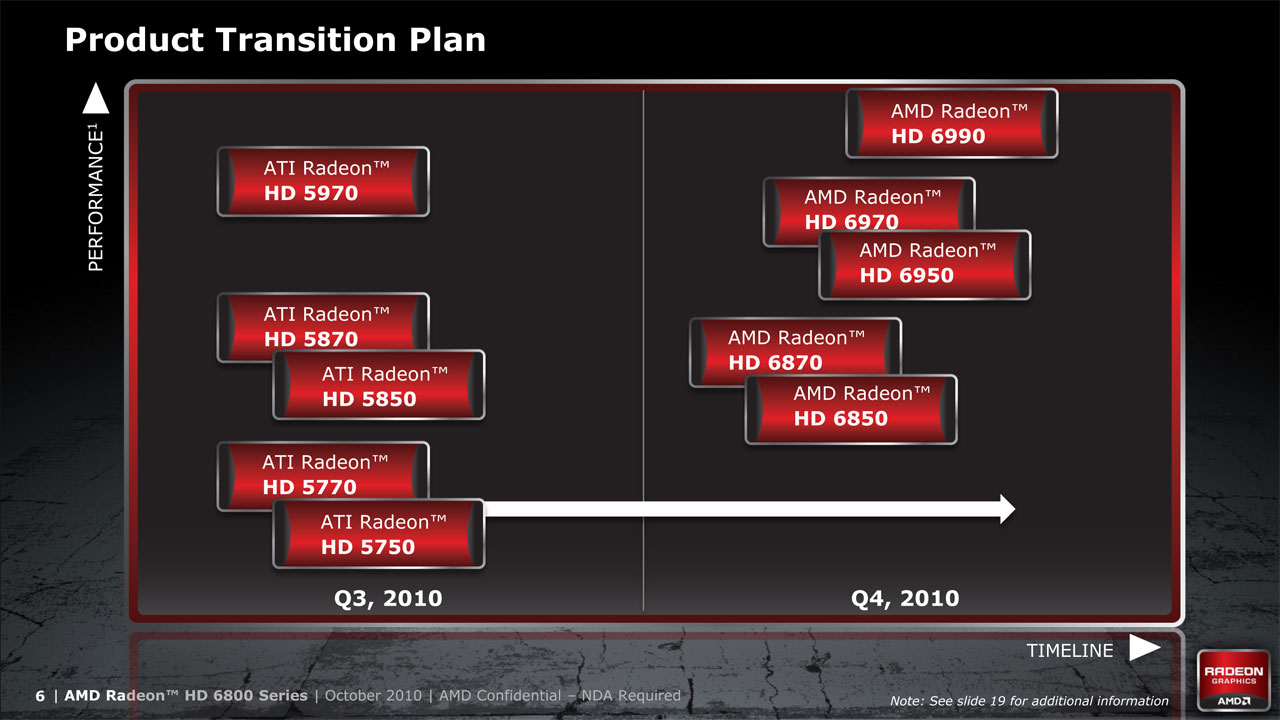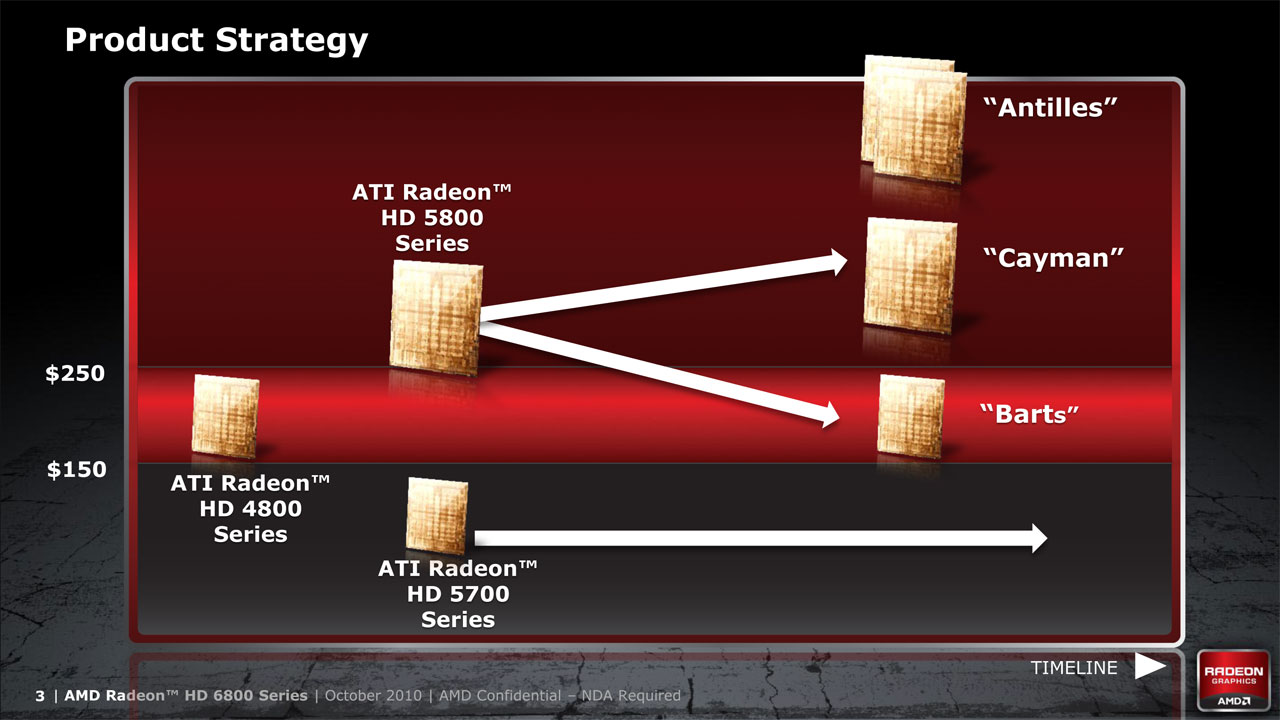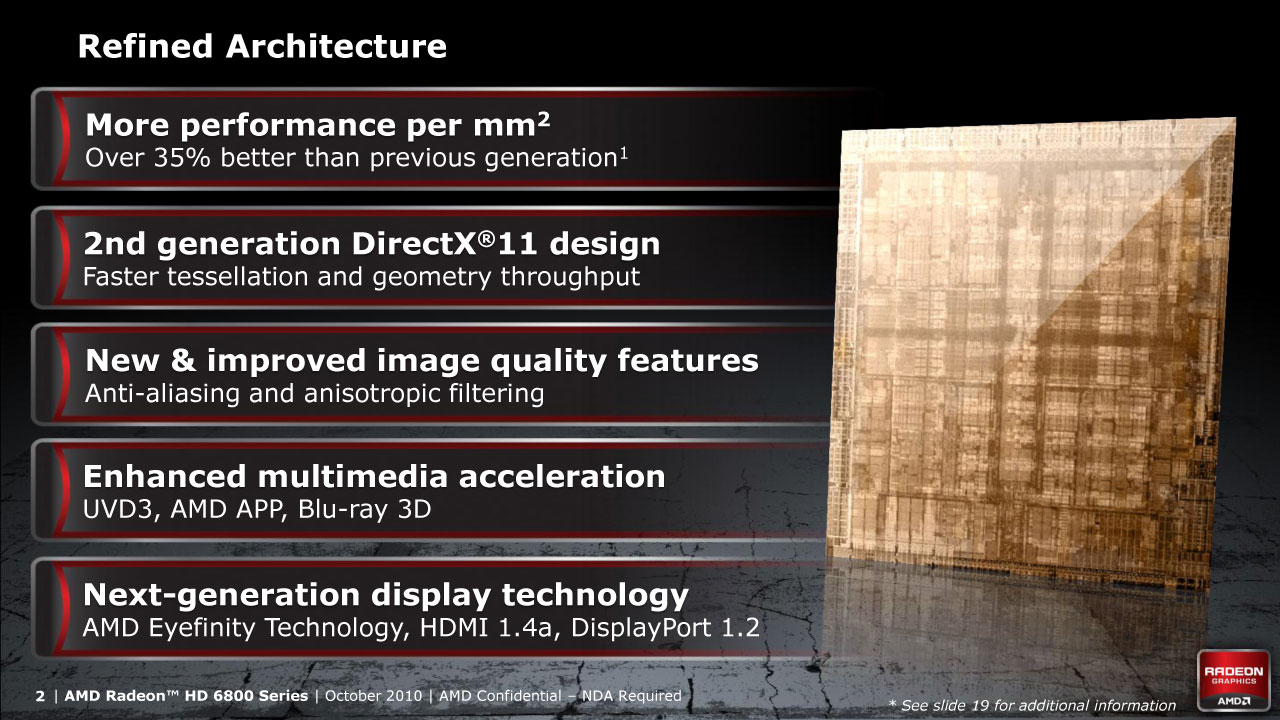AMD Radeon 6870 & 6850 Review
Just over a year ago, kicked off their Radeon HD 5000-series video card line with the release of the Radeon HD 5870. With this release, they unveiled "Eyefinity" - their single GPU multi-display technology. Over the last year, AMD has continued to release cards in the "Evergreen" line and filled out their DX11 product stack. Fast forward 13 months and AMD returns with the 6000-series ("Northern Islands") - an evolution to, and update of the original Eyefinity cards.
AMD has been talking with gamers, and listening to what gamers wanted in a GPU. They have distilled that into a GPU that offers no-compromise performance, the latest technology, lower price, a more flexible and affordable Eyefinity experience and 3D Stereo for games and movies.
To that end, AMD is releasing the "Barts" products - HD 6870 and HD 6850 - with the following features:
- Performance on par with the HD 5870 and HD 5850
- Power, heat and price on par with the HD 5770
- More connectivity options: 2x Mini-DP 1.2, 2x DVI, 1x HDMI 1.4a
- Improved visual quality through new Anti-Aliasing and Anisotrpic Filtering
- Improved DX11 performance through more efficient Tessellation
- Improved multimedia acceleration for media playback ("EyeDefinition")
- Improved parallel processing for media encoding and computing ("EyeSpeed")
- Improved multi-monitor performance through improved ecosystem and affordability ("Eyefinity")
AMD feels that the "Sweet Spot" for the GPU market is within a $150 - $250 price point. AMD had a product within this range in the 4800-series, but failed to provide a compelling offereing between $150 and $250 within the 5000-series. The goal of the "Barts" family is to fill that (rather large) niche, while the upcoming "Cayman" (HD 6950 and HD 6970) fill out the Enthusiast range, and the "Antilles" (HD 6990) will occupy the Dual-GPU spot in the 6000-series.
AMD feels that the "Sweet Spot" for the GPU market is within a $150 - $250 price point. AMD had a product within this range in the 4800-series, but failed to provide a compelling offereing between $150 and $250 within the 5000-series. The goal of the "Barts" family is to fill that (rather large) niche, while the upcoming "Cayman" (HD 6950 and HD 6970) fill out the Enthusiast range, and the "Antilles" (HD 6990) will occupy the Dual-GPU spot in the 6000-series.



Architecture & Specs
The Radeon HD 6870 and HD 6850 are a refinement of the 5800 and 5700 families, and many of the specs will be familiar. Pricing on the other hand, falls much more in line with the 5700.
| Card | GPUs | Transistors | Max Memory | Shaders | Clock (MHz) | TDP (Watts) | MSRP* | ||
| Core | Mem | Idle | Max | ||||||
| AMD Radeon HD 6870 | 1 | 1.8B | 1GB | 1120 | 900 | 1050 | 19 | 151 | $239 |
| AMD Radeon HD 6850 | 1 | 1.8B | 1GB | 960 | 775 | 1000 | 19 | 127 | $179 |
| ATI Radeon HD 5870 | 1 | 2.15B | 1GB | 1600 | 850 | 1200 | 27 | 188 | $374 |
| ATI Radeon HD 5850 | 1 | 2.15B | 1GB | 1440 | 725 | 1000 | 27 | 151 | $279 |
| *These values represent the maximum wattage allowed through the AMD PowerTune. AMD estimates the average wattage draw for gaming is 375W/190W/140W for the 6990/6970/6950, respectively. |
|||||||||
